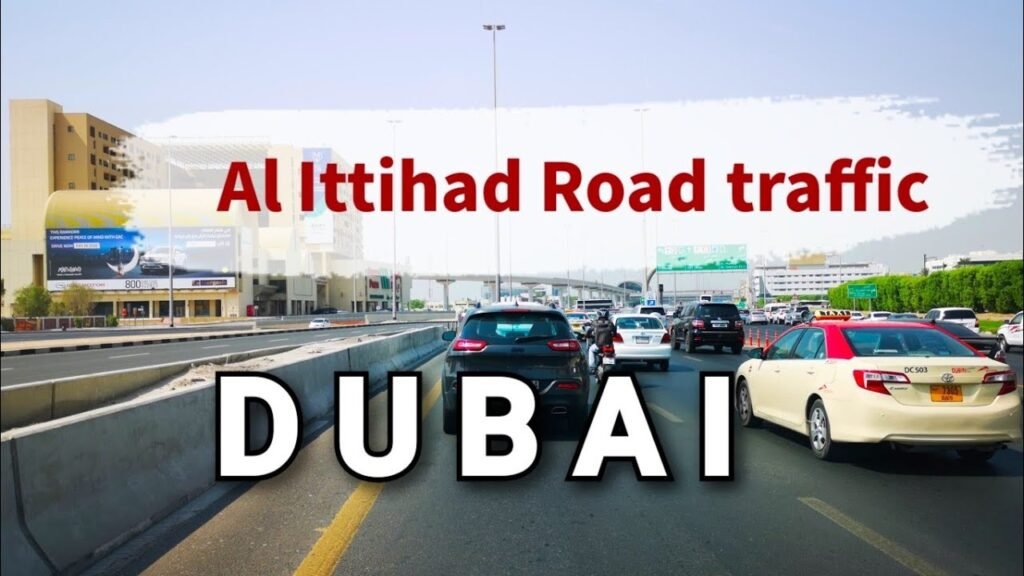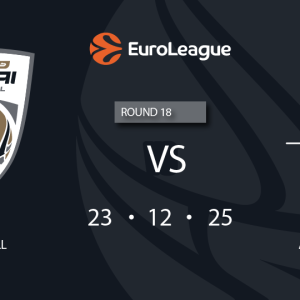Al Ittihad Street, one of the most significant highways in Dubai and the UAE, serves as a crucial transportation link between Dubai and the northern emirates. Officially designated as E11, it is part of the UAE’s longest highway, stretching from Abu Dhabi to Ras Al Khaimah. This major roadway plays a pivotal role in daily commutes, trade, and connectivity, making it an essential component of the country’s infrastructure.
A Historic and Strategic Route
Al Ittihad Street holds historical significance as one of the oldest highways in the UAE, developed to facilitate the rapid urban expansion of Dubai and its neighboring emirates. Over the years, it has evolved into a high-traffic corridor catering to thousands of commuters, businesses, and logistics operators daily. Originally a simpler roadway, it has undergone numerous expansions to meet the increasing demands of a growing population and a thriving economy. The route has been instrumental in supporting Dubai’s emergence as a global metropolis by facilitating easy access between key commercial hubs.
As Dubai evolved into an economic powerhouse, Al Ittihad Street became the backbone of trade and transportation. It has supported the rapid growth of industries such as real estate, tourism, and logistics by connecting some of the busiest districts in the city. The road has also played a significant role in the expansion of inter-emirate trade, allowing seamless movement between Dubai, Sharjah, and beyond. Its continuous enhancements reflect Dubai’s commitment to developing world-class infrastructure and maintaining its reputation as a global leader in urban planning and connectivity.

Key Landmarks and Connectivity
The highway is lined with numerous residential, commercial, and industrial hubs. Some of the notable locations along Al Ittihad Street include:
- Dubai International Airport – One of the busiest airports in the world, with easy access from the highway.
- Deira City Centre – A popular shopping and lifestyle destination offering retail, dining, and entertainment options.
- Al Mamzar Beach Park – A scenic coastal park offering leisure and recreational activities for families and visitors.
- Sharjah Border – The road seamlessly connects Dubai to Sharjah, facilitating inter-emirate travel and trade.
- Al Mulla Plaza – One of the oldest shopping malls in Dubai, located near the Deira end of the highway, serving as a popular retail and business hub.
The strategic placement of these landmarks makes Al Ittihad Street one of the most frequently traveled routes in the UAE. It is a preferred road for daily commuters traveling between Dubai and Sharjah, as well as businesses transporting goods and services across emirates. The presence of well-established residential communities along the route also highlights its importance for the city’s inhabitants, offering easy access to essential services and entertainment hubs.

Traffic Flow and Congestion Management
Given its importance, Al Ittihad Street has undergone multiple upgrades to manage traffic congestion and improve safety. The introduction of expanded lanes, smart traffic management systems, and alternative routes such as Sheikh Mohammed Bin Zayed Road (E311) and Emirates Road (E611) has eased traffic flow, especially during peak hours.
To address congestion issues, authorities have implemented measures such as intelligent traffic signals, road widening projects, and enhanced exit and entry points to major intersections. Advanced AI-powered monitoring systems are used to assess traffic patterns and adjust signal timings dynamically, improving overall flow and minimizing bottlenecks. The government has also encouraged carpooling and the use of public transportation to reduce the number of private vehicles on the road, contributing to a more sustainable and efficient transport network.
Public Transport Integration
Al Ittihad Street is well-integrated with Dubai’s public transport network. The Dubai Metro’s Red Line runs parallel to the highway, providing a fast and efficient alternative to road travel. Additionally, multiple RTA bus routes and taxi services operate along the road, ensuring seamless connectivity for commuters.
The availability of metro stations such as Deira City Centre, Al Rigga, and Union Station offers residents and visitors a convenient way to navigate Dubai without relying on personal vehicles. The metro system has significantly alleviated congestion along Al Ittihad Street by encouraging public transport usage. Additionally, the highway is well-equipped with pedestrian-friendly crossings and cycling lanes in specific areas, further promoting alternative transportation options.
The road also plays a critical role in connecting residents to Dubai’s central business districts, ensuring a smooth and accessible journey for professionals working in major corporate and government institutions. The continued expansion of metro services and bus routes along Al Ittihad Street further enhances its role in Dubai’s long-term urban mobility strategy.
Sustainability and Smart Mobility Initiatives
As part of Dubai’s vision for sustainable urban development, authorities are implementing eco-friendly transport solutions along Al Ittihad Street. Smart lighting systems, solar-powered traffic signals, and the promotion of electric vehicle usage are some of the initiatives that aim to reduce the highway’s environmental impact.
Dubai’s ongoing investments in smart mobility also include plans for autonomous vehicles and AI-driven transport solutions that will further optimize road usage and minimize congestion. The city’s commitment to smart city initiatives ensures that Al Ittihad Street will continue to evolve with future technological advancements.
Future Developments
With Dubai’s continuous urban expansion, plans for further enhancements to Al Ittihad Street are in place. Future developments may include additional interchanges, smart mobility solutions, and further integration with sustainable transport initiatives to accommodate the city’s growing population and economic activities.
Upcoming projects aim to introduce dedicated express lanes for electric vehicles and public transport, improving efficiency and reducing travel times for commuters. Road infrastructure improvements, including expanded pedestrian pathways and more sophisticated traffic monitoring systems, will also contribute to a safer and more efficient travel experience.
Additionally, Dubai authorities are working on implementing AI-driven traffic prediction models that will allow proactive management of congestion. These developments align with Dubai’s ambitious goal of becoming a global leader in smart city initiatives, ensuring that Al Ittihad Street remains at the forefront of modern transportation solutions.
A Lifeline of Dubai’s Transport Network
Al Ittihad Street remains one of Dubai’s most crucial roadways, facilitating movement, trade, and economic growth. As the city continues to evolve, this vital highway will play an increasingly important role in shaping Dubai’s transportation landscape and urban connectivity.
The continuous expansion and enhancement of Al Ittihad Street reflect Dubai’s forward-thinking approach to infrastructure development. By integrating smart technologies, sustainable solutions, and efficient transport systems, Dubai is ensuring that its road networks remain future-ready. Whether for daily commutes, business logistics, or leisure travel, Al Ittihad Street stands as a symbol of Dubai’s commitment to connectivity and progress.
As the emirate continues its ambitious journey toward becoming a global smart city, Al Ittihad Street will remain a vital component of its transportation ecosystem, serving millions and fostering economic growth in the UAE for years to come.
Do follow Uae stories for more Updates
Arous Al Bahar: The Ultimate Spot for Grilled Seafood Lovers in Sharjah!














